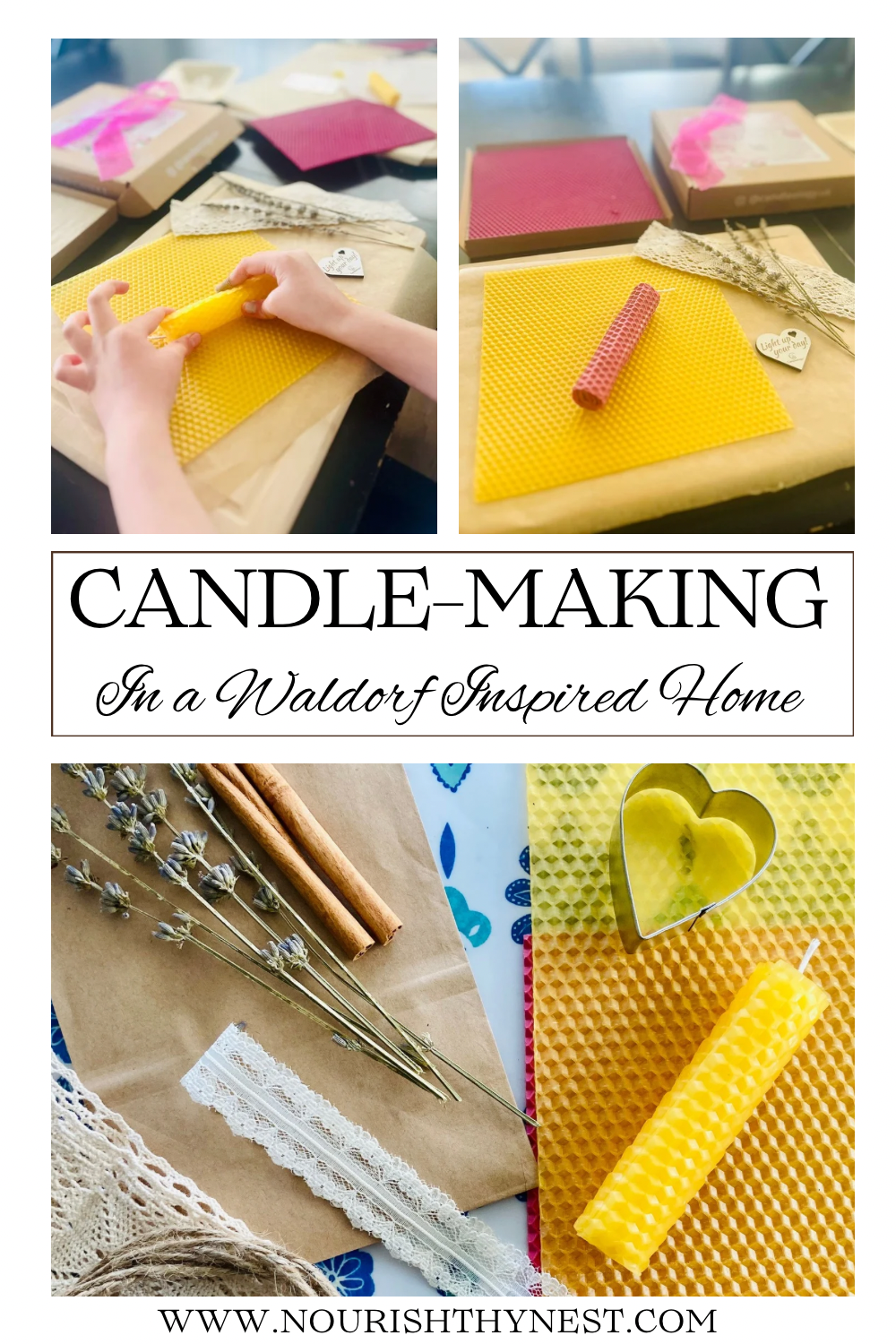
This blog is reader supported, and some of the links in this post are affiliate links, meaning, at no additional cost to you, I will earn a commission if you click through and make a purchase. As an Amazon Associate I earn from qualifying purchases.
As the chill of winter begins to soften, Candlemas offers a beautiful opportunity to celebrate the return of light and the promise of spring.
This Waldorf-inspired festival is steeped in rich traditions from both Christian and Celtic roots, weaving a story of renewal, hope, and interconnectedness.
Candlemas, celebrated on February 2nd, aligns with the Celtic festival of Imbolc and St. Brigid’s Day, which is observed on February 1st.
Imbolc marks the midway point between winter and spring, honoring the return of light, fertility, and the first stirrings of life in nature.
St. Brigid’s Day evolved from the ancient celebration of the Celtic goddess Brigid, who symbolized creativity, healing, and growth. Over time, this day was adopted into Christian tradition to honor St. Brigid of Kildare, a beloved Irish saint known for her devotion and wisdom.
Together, these festivals share a universal theme: the triumph of light over darkness and the renewal of life.
For those of us inspired by Waldorf education, Candlemas fits seamlessly into the seasonal rhythms that anchor and nourish our children.
These rhythms help create a sense of joy and reverence while deepening our connection to nature and each other
How We Celebrate Candlemas in Our Home
In our family, Candlemas is a treasured part of our seasonal rhythm.
Each year, we celebrate with simple, meaningful traditions that honor the light and bring us closer together.
Here are some ideas you can incorporate into your own celebrations:
Make Hand-Rolled Beeswax Candles
Crafting candles from natural beeswax is one of our favorite traditions. It’s a wonderfully tactile activity that children love, and the results are beautiful.
To make it extra special, we decorate our candles with dried citrus rounds, cinnamon sticks, natural hemp lace, and twine.
Mini cookie cutters can also be used to cut shapes out of beeswax sheets to press onto the candles—an easy and creative touch.
(See below for detailed instructions!)
Take a Nature Walk to Look for Early Signs of Spring
There’s a gentle magic to behold in stepping outside together and noticing the first signs of spring.
We take a family nature walk and look for hints of the season’s renewal—budding trees, tiny green shoots, or the songs of returning birds.
This quiet, mindful activity fosters a sense of reverence and connection with the natural world.
You can keep it as an intimate family tradition or invite friends to join, making it a shared celebration of the light and life emerging around you.
Enjoy a Feast by Candlelight
A Candlemas feast can be as simple or elaborate as you like.!
We love to cook with seasonal ingredients, making dishes that reflect the themes of renewal and warmth.
Bannock, a traditional oatcake, is a lovely addition. Serve it alongside a hearty soup, or as a sweet treat with fruit and cream, or cinnamon and honey. Get our recipe here
Recite Candlemas Verses
Poetry and verse are integral to Waldorf-inspired celebrations. Reciting or reading verses together adds rhythm and depth to the occasion, offering moments for reflection and connection.
Share Stories of Light and Hope
Storytelling is a wonderful way to engage children’s imaginations and explore the themes of Candlemas.
You can choose stories that celebrate the changing seasons, renewal, and the power of light overcoming darkness.
Here is a wonderful book about Saint Brigid that we love to read each year!
How to Make Hand-rolled Beeswax Candles
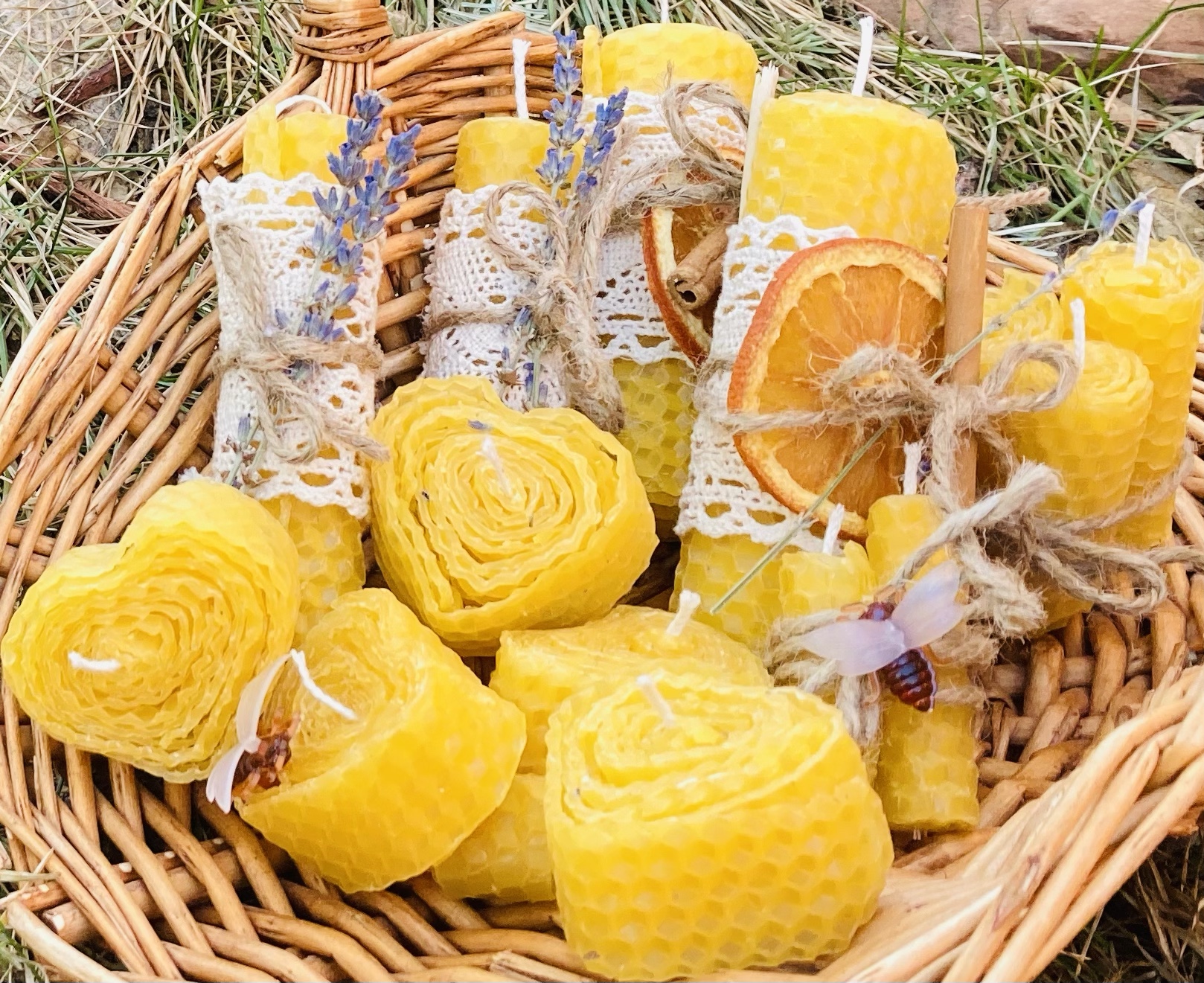
Making beeswax candles is such a satisfying activity, especially for little hands!
Here’s how we do it:
Materials:
(We use these kits, which make this craft so easy!)
- Sheets of natural beeswax
- Candle wicks
- Scissors
- Hair dryer or oven
- Decorative elements: twine, lace, dried flowers, orange slices, cinnamon sticks
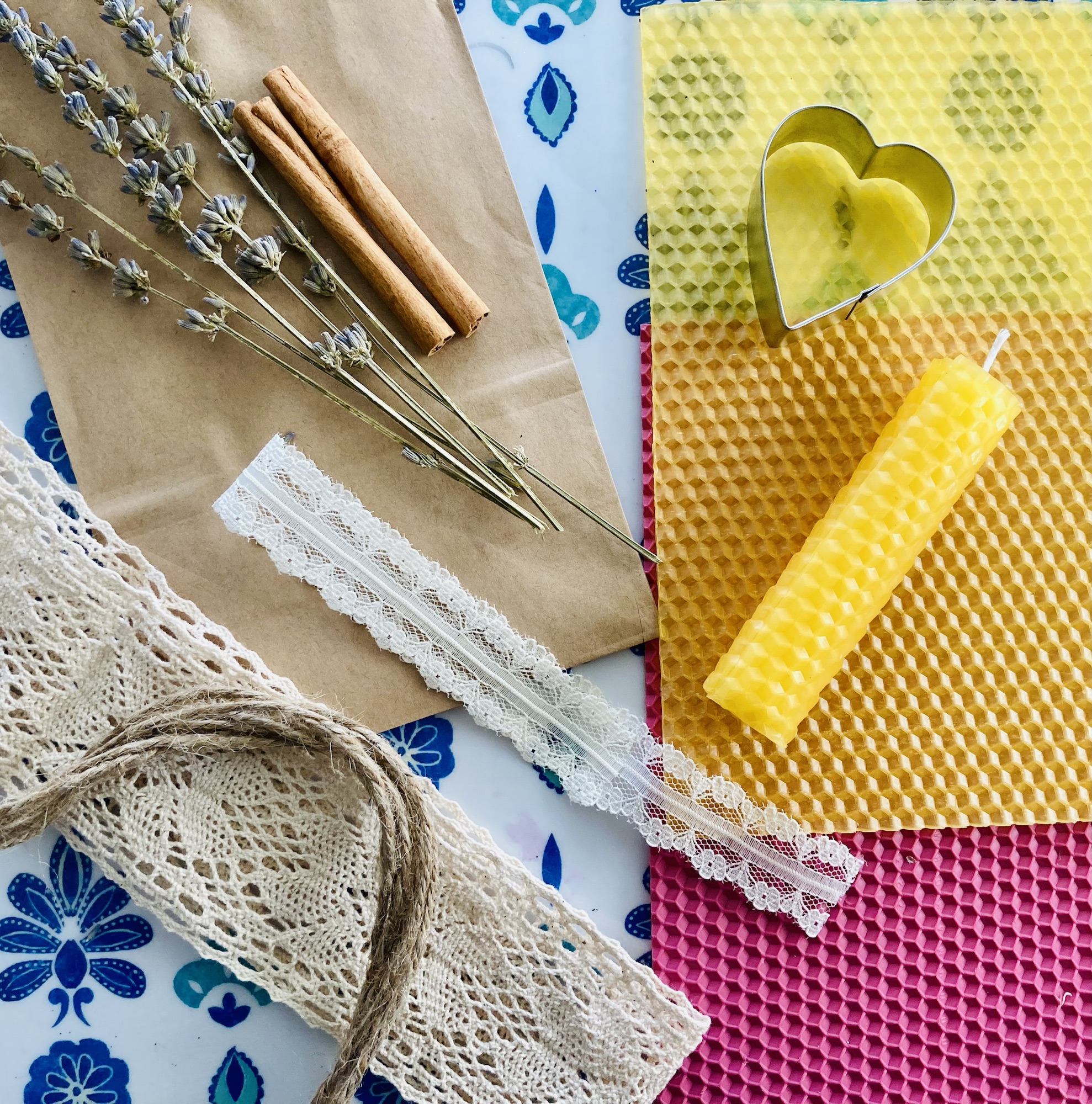
Instructions:
- Trim the beeswax sheets to your desired size. Smaller sheets are great for kids to handle.
- Cut a piece of wick slightly longer than the height of your candle.
- Warm the beeswax sheet with a hair dryer until it feels pliable but not melting, or place the sheets on a parchment lined baking sheet and warm in your oven on the lowest temperature. Keep a close eye on them so that they don’t melt!
- Place the wick along one edge of the sheet and roll the wax tightly around it, pressing gently to avoid cracks.
- Once rolled, decorate your candle with twine, lace, dried citrus rounds, or sprigs of dried flowers. You can also use cookie cutters to create wax shapes and press them onto the candle.
So easy, simple, and so pretty!
These candles are not only lovely for your celebration but also make thoughtful handmade gifts.
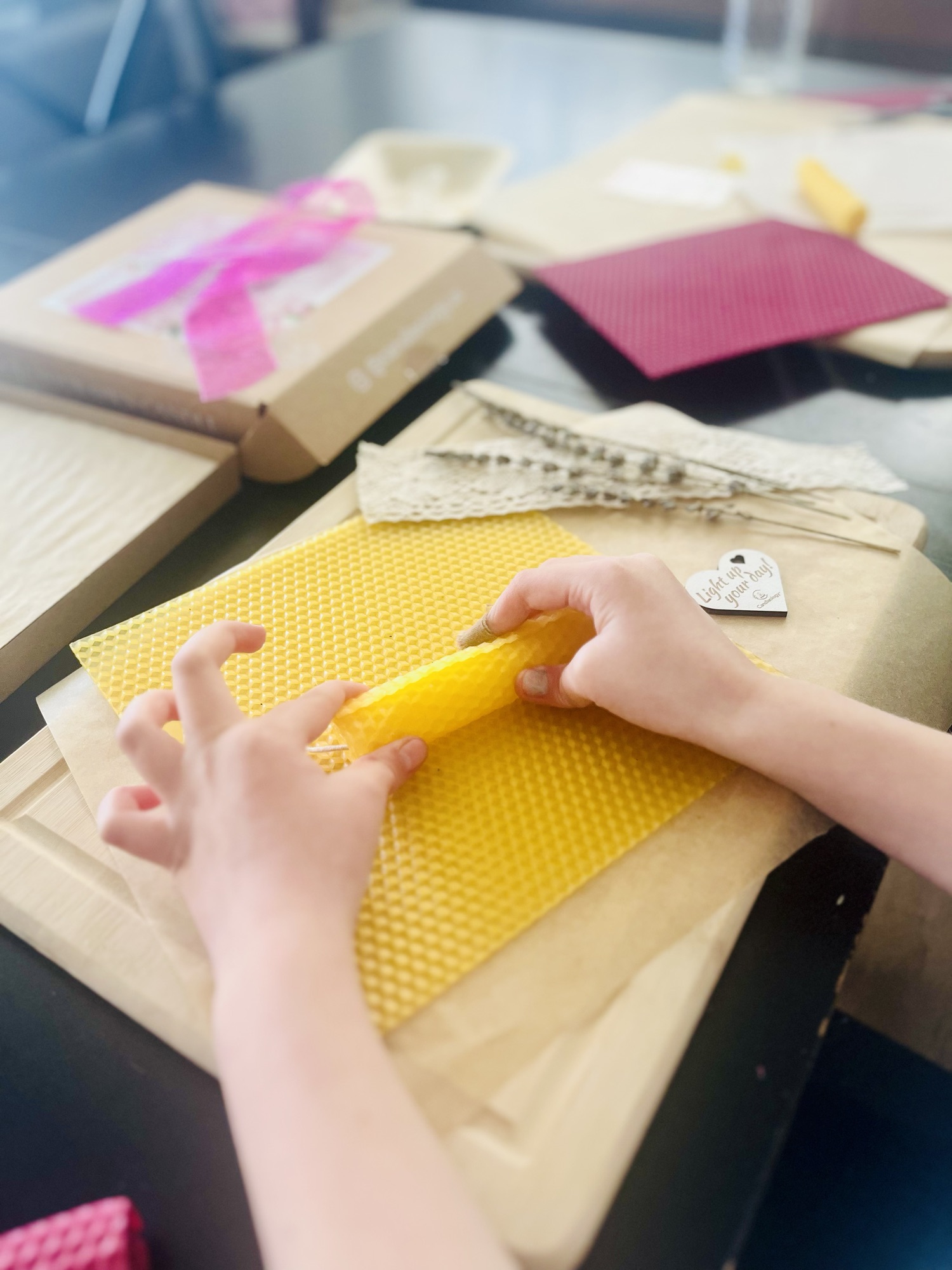
Candlemas is more than a single day—it’s an invitation to nurture joy and reverence in your home.
Through crafting, storytelling, and quiet reflection, these gentle traditions can help you and your family feel grounded in the beauty of the seasons.
Have you tried making your own beeswax candles or celebrated Candlemas in a special way? I’d love to hear about your traditions in the comments below!
Click here for more Candlemas ideas
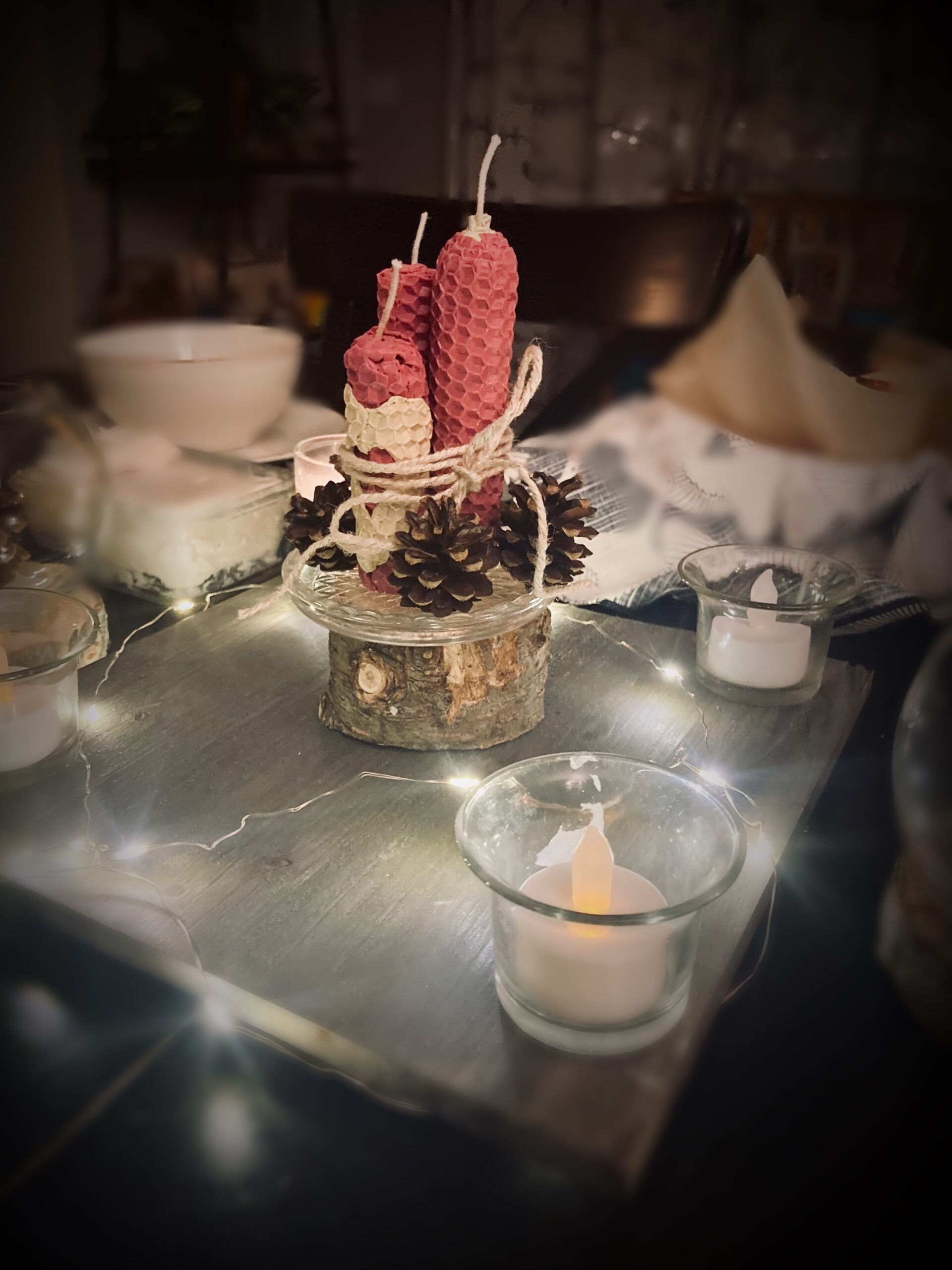

2 thoughts on “Waldorf-Inspired Handmade Candle Craft for Candlemas”